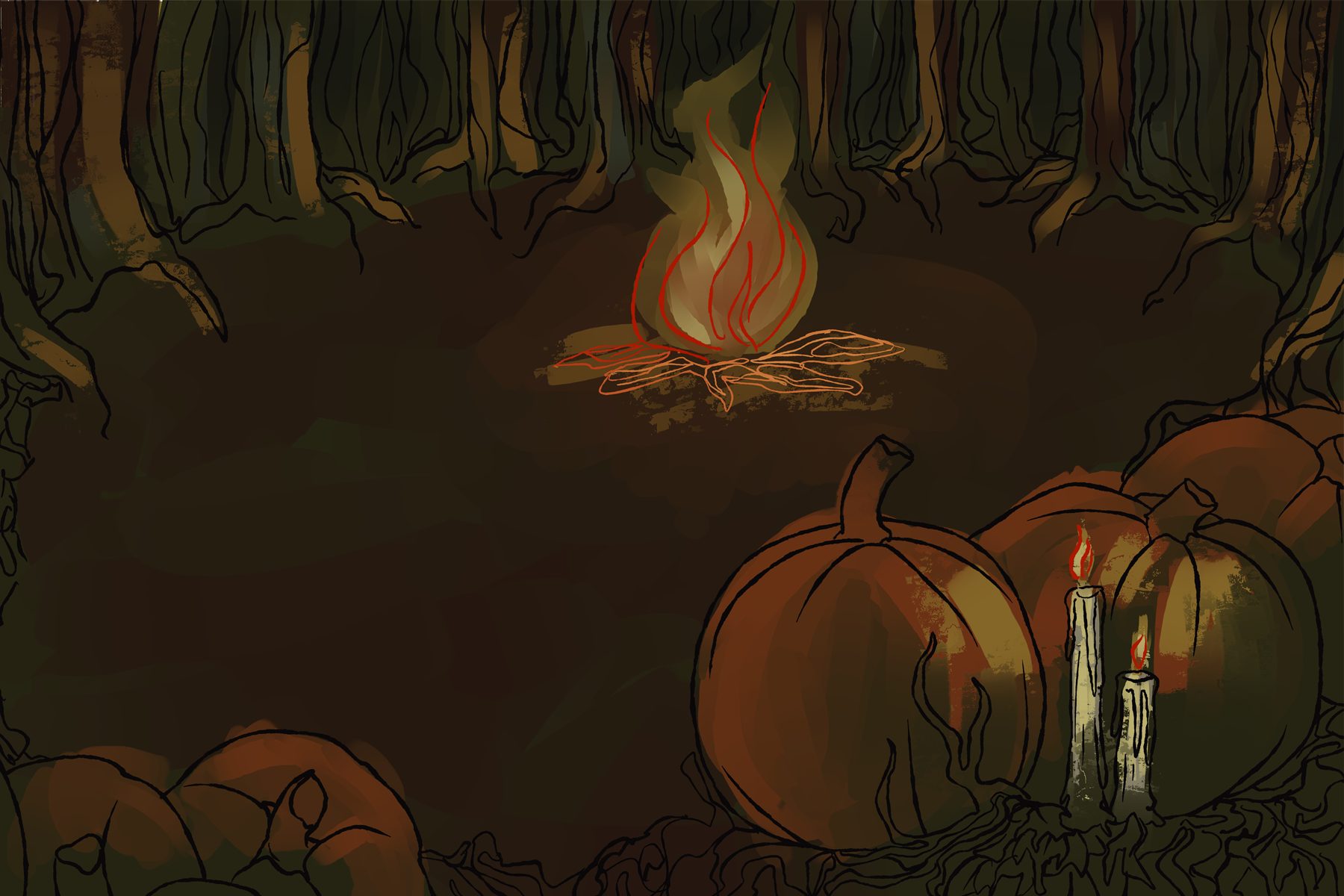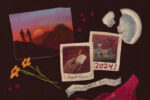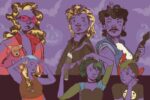October begins with autumn couture and cuisine, but ends with a spooky All Hallows’ Eve. A name now seldom used, it denotes a religious celebration overrun with ghosts, costumes and candy. But Halloween is not as demonic nor commercial as modern conception suggests. It’s rich history spans 2,000 years and survived Roman conquest, Christian influence and the journey from the Old World to the New World. But that’s getting too far ahead, for it all began with the festival of Samhain.
ANCIENT ORIGINS
As their social and religious practices reflect, the Celts were a people at the mercy of nature. They prayed to gods, observed festivals and prophesied events in attempts to better their chances of survival, especially come winter. The beginning of dark, cold days was marked by the festival of Samhain.
From Oct. 21 to Nov. 1, Druids (Celtic priests) made offerings to their deities for a good harvest and lit community fires representing the sun. Families then took home a small flame to light the winter nights, but amidst communal prayer and revelry lurked an air of apprehension and fear. Samhain fell between the equinox and solstice when the barriers between earthly and spiritual realms was weakest — leaving Earth’s door unlocked for spirits both benevolent and malign.
The Celts donned costumes to ward off dark forces and avoid faerie capture, but some monsters pushed through the veil undeterred. The shape shifter Pukah and the headless Lady Gwyn, along with her black pig, relentlessly stalked humanity, implicating untold chaos. Alongside such havoc, however, came epic stories of Celtic heroes, Nera and Fionn mac Cumhaill, whose adventures inspired hope that good can triumph.
Even after Rome conquered the Celts in the 1st century B.C., Samhain remained, albeit with influence from the Roman festivals of Feralia and Pomona. The former of these two Roman holidays commemorated the recently deceased, while the latter honored the goddess of fruit and trees, which may be the origin of apple bobbing. After surviving the Romans, Samhain faced a more formidable force that stripped the festival of its pagan attire and dressed it up in monotheistic values.
CHRISTIAN INFLUENCE
As Christianity spread, religious officials found that shrouding pagan holidays in Christianity was more effective at creating converts than by completely banning polytheistic traditions. Pope Boniface had little success in discouraging Samhain by moving the celebration of deceased souls to May 13, dubbing it All Martyrs’ Day. Pope Gregory III, recognizing his predecessor’s failure, separated the holiday into All Saints’ Day and All Souls’ Day, occurring on Nov. 1 and 2, respectively.
The decision certainly had its desired effect. Although some pagan elements lingered, Samhain became a celebration on the night before All Saint’s (or “hallows”) Day — All Hallows’ Eve.
Christianity not only gave name to the modern Halloween, but many of its traditions as well. Trick-or-treating is supposedly derived from the Scottish and Irish practice of going door-to-door, in a manner akin to Christmas caroling, and singing songs honoring the dead. Others cite an English practice of the poor begging wealthy aristocrats for “soul cakes” in return for prayers on All Souls’ Day.
Carved turnips, or pumpkins in Ireland, began to appear during the Middle Ages. But these jack-o-lanterns were not simply decorations. Oh no, they scared off the forever wandering soul of Stingy Jack, a notorious trickster who regularly irritated the Devil himself.
Anxious to be rid of Jack for all eternity, the Devil struck a deal: If Jack ceased his antics and left the Devil in peace for a measly 10 years, Jack’s soul would never know Hell. At his death, Jack found the gates of Heaven closed to his sinful soul. And the Devil, true to his word, left the damned Jack wandering Earth as nothing but a burning coal stuffed inside a turnip.
COMING TO AMERICA
Prior to the 19th century, colonial America had few Halloween traditions. Strict Puritan ideals in New England prohibited any semblance of pagan traditions, while Maryland and southern colonies limited Halloween to ghost stories. The true spirit of Halloween, along with the remnants of Samhain, came to America in a familiar fashion — by ship. Slowly the holiday left Irish communities who carried it across the Atlantic and took on a distinctly American flavor. But even then, it refused to remain stagnant.
Halloween changed from a Christian-modified harvest festival into a night of monsters and mischief. By the 1800s, public opinion molded Halloween into a more family friendly holiday complete with kids in costumes, sweet treats and neighborhood get-togethers. Finally, the 20th century saw All Hallows’ Eve stripped of any serious superstitious connotations and religious significance. Today, Americans spend $6 billion on Halloween, making it the second largest commercial holiday after Christmas.
AROUND THE WORLD
Jack-o’-lanterns, costumes, candy, horror movies and haunted houses make up the corpus of Halloween festivities in much of the Anglosphere. Celtic and Roman pagan festivals, Christian doctrine, American culture and modern consumerism all played a role in stitching together this Frankenstein-esque holiday.
It’s naive and narcissistic, however, to presume that All Hallows’ Eve is the only way to honor the dead. Societies across the globe celebrate their ancestors, but many disregard such practices as “versions of Halloween.” With rich and unique histories, some much older than Halloween, the following holidays cannot be degraded as mere imitations.
Barriletes Gigantes (Guatemala): In the towns of Sumpango and Santiago Sacatepequez, giant kites 40 feet wide soar above graveyards in honor of All Saints’ Day. Legend tells that the higher the kite flies, the closer its message is to the dead in heaven. This 3,000-year-old Mayan tradition long predated Spanish-Catholic conquest of the New World.
Toro Nagashi (Japan): At the start of August’s three day festival, people light lanterns in their homes to welcome ancestral spirits to Earth and, at the end of the festival, place those lanterns on streams to guide the souls back. In another tradition dating to the 13th century, bonfires are lit atop five mountains to lead goods souls to Kyoto and defend against evil ones.
Gai Jatra (Nepal): The cow, sacred in Hinduism, is the center of this communal festival honoring the dead. All families with relatives who have died in the past year gather and process through the city led by a cow.
La Calabiuza (El Salvador): Although the indigenous Pipil tradition predates Spanish conquest, it did not gain popularity until recently. El Salvador’s brutal civil war related La Calabiuza, and many other indigenous holidays, to the margins of society. But after young people began celebrating an Americanized Halloween, community groups saw the importance of keeping tradition alive. Salvadorians dress as character from folklore on Nov. 1 and, the next day, adorn with wreaths the graves of family members.
Pchum Ben (Cambodia): Every September, Cambodians honor their ancestors over a 15-day period. Secular activities include riding water buffalo, horse races and wrestling matches while more religious traditions involve prayers, offerings and visiting sites where loved ones died. Pchum Ben is one of the most important.
















